The Gone Sounds of Jazz with Sid Gribetz
An archive of jazz radio programs focused on intensive in-depth looks at great themes from jazz history. Winner of the Jazz Journalist Association Award for Career Excellence, Sid has been broadcasting for over 40 years on WKCR-FM, NYC. He was also voted ’Best Jazz DJ’ by the Village Voice in its 2008 Best Of NY Issue.
Episodes
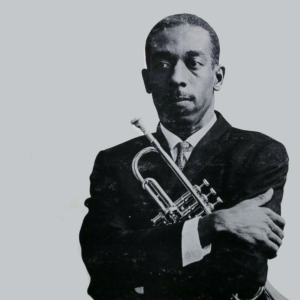
Friday Apr 11, 2025
Blue Mitchell
Friday Apr 11, 2025
Friday Apr 11, 2025
Blue Mitchell was perhaps the most melodic and lyrical of the coterie of “hard bop” soulful trumpeters, and best known for his work in the classic Horace Silver groups.
Richard Mitchell was born in Miami, Florida on March 13, 1930. “Blue” was a childhood nickname that became prescient as he later picked up the horn and became a professional jazz musician. After high school, Mitchell began a career in popular bands such as Paul Williams and Earl Bostic.
Brought to the attention of Riverside Records by his old colleague and fellow Floridian Cannonball Adderley, Mitchell appeared on the 1958 album “Portrait of Cannonball”. Riverside Records quickly signed hum to the label, and he recorded as a leader in groupings from small combos to orchestral settings, and as an in-house sideman on many now classic sessions.
Next Blue joined Horace Silver’s working band. Together with tenor saxophonist Junior Cook, Mitchell’s trumpet formed the horn section for Silver’s great hits such as Sister Sadie, Cookin’ at the Continental, Blowing The Blues Away, and many more.
After leaving Silver, Mitchell recorded many stunning albums as a leader for Blue Note Records in their style throughout the 1960's.
With the downturn in jazz popularity in the late ‘60's, Mitchell joined the Ray Charles organization, and then later performed with the blues-rock fusion groups of British music star John Mayall.
Mitchell eventually settled in Los Angeles, later in the 1970s worked as the featured soloist in bands backing singers like Tony Bennett and Nancy Wilson, and in jazz combos with friends such as Harold Land.
Mitchell died of cancer in 1979 at the age of 49.
This five hour program features music from his prolific output on the Riverside and Blue Note labels.
originally broadcast September 14, 2014

Thursday Apr 03, 2025
Billie Holiday 3
Thursday Apr 03, 2025
Thursday Apr 03, 2025
For the 2018 Billie Holiday WKCR Birthday Broadcast I had the closing shift. So for a final salvo on a late Saturday night, I put together a group of recordings – Billie with Louis Armstrong, and then representative “hits" from the various stages of her career. I played them with virtually no talk or interruption. A sublime 77 minutes guiding the way towards a velvety, hushed, seductive midnight hour.
Here to savor at your own speed, to call on Lady Day for ethereal companionship on a special, or not so special, eve........

Thursday Apr 03, 2025
Burton Lane
Thursday Apr 03, 2025
Thursday Apr 03, 2025
Burton Lane (nee Burton Levy, 1912-1997) was one of the legendary masters of American popular song. Lane’s signature masterpiece was his score for the Broadway musical "Finian's Rainbow", and he also has lasting fame for the show "On A Clear Day You Can See Forever”. Lane was a figure in tin pan alley and Hollywood musicals, as well as the Broadway stage. He was the composer of enduring standards such as "I Hear Music", "Everything I Have Is Yours", "How About You", “Too Late Now”, “The Lady’s In Love With You” and many other great songs. This program presents a discussion surveying Lane's career, and musically features jazz versions of his tunes. It includes recordings from Miles Davis, Sonny Rollins, Stanley Turrentine, Billie Holiday, Dinah Washington and many more. The Lane program is one of a continuing occasional series focusing on the composers of American popular songbook, and their legacy in the modern jazz repertory.
originally broadcast July 26, 2009
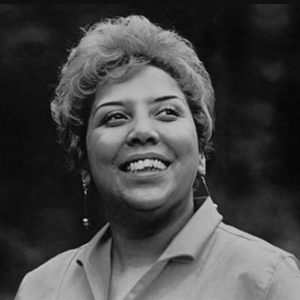
Wednesday Mar 26, 2025
Etta Jones
Wednesday Mar 26, 2025
Wednesday Mar 26, 2025
Etta Jones was one of the greatest jazz vocalists in the truest meaning of the word. She sang with a strong personal style, digging deep into the lyrics to reveal their inner meaning and invest them with keen emotion. Etta also swung! She possessed the great rhythmic and improvisational sensitivities of a jazz soloist, and she delivered the blues and the American popular songbook with unmitigatedly raw power.
Etta was born in South Carolina but raised in Harlem, New York. She made her first mark as a 15 year old at the Amateur Contest at the Apollo Theater, where she attracted the attention of Buddy Johnson who needed a temporary replacement for his sister Ella. Following that formative early experience, Etta Jones paid her dues in the music business for many years. Etta made her breakthrough with Don’t Go To Strangers, her hit record for Prestige in 1960. After several years of producing more fine records for Prestige, Etta teamed up with tenor saxophonist Houston Person. For over 30 years they toured the country, and the world, and made many recordings, concerts, and nightclub appearances in their sympathetic, soulful manner.
originally broadcast March 21, 2010
You may also be interested in my published discography of Etta Jones
https://jazzdiscography.com/etta-jones-discography/

Wednesday Mar 19, 2025
Count Basie in the 1950s
Wednesday Mar 19, 2025
Wednesday Mar 19, 2025
The big band era died out in the post World War II years as musical tastes in both jazz and popular music changed in our culture. As another factor, the economics of the music industry were transformed, making it difficult to sustain the financial footing of a large touring ensemble.Yet Count Basie managed to stem this tide and not only survive, but thrive in this new milieu.First, in 1950 he trimmed his band to an octet for a couple of years, and soloists such as Clark Terry, Buddy DeFranco and Wardell Gray made him successful artistically and allowed him to stay alive financially.Next, Basie developed a different big band concept that was refined and elegant yet maintained the core values of “in the pocket” rhythm and an affinity for dancers It included arrangements by cultivated masters such as Neal Hefti and Ernie Wilkins and a revitalized ensemble of fine musicians and composers. This sound is exemplified by enduring pieces such as “April In Paris”, “Splanky” “Shiny Stockings” and “Corner Pocket”, to name a few. The emerging aggregation was termed the “New Testament” band, to distinguish it from the divine raw power of the original. Basie’s earlier “swinging-est band in the land” was now the “Old Testament”.With recordings for Norman Granz, lengthy engagements at the Birdland nightclub, and national concert tours, Basie gained a new level of popular appeal. The band continued to grow and evolve with the addition of musicians such as Joe Newman, Thad Jones, Al Grey, Frank Foster and Frank Wess. There also were intermittent stays by the robust Eddie Lockjaw Davis. Eventually, Basie further enhanced his presentation with the added flavor of the suave blues vocals of Joe Williams.The band took a further step forward in 1957 as it propelled itself to a more explosive sound while staying within its still graceful outlook and sophisticated arrangements. This was animated by its switch to Roulette Records and their first album there, starkly featuring the mushroom cloud cover photo and title E=MC2. Thus was ushered in what would be called Basie’s “Atomic Period”, lasting through the end of the decade and even into the early 1960s..Our program surveys these themes and plays representative samples of Basie’s famous, and also less-famous, recordings of the period.
originally broadcast March 16, 2025
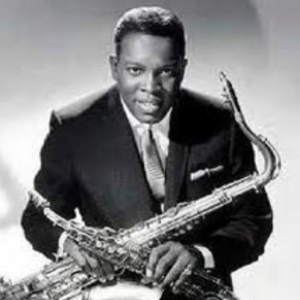
Friday Mar 07, 2025
Jimmy Forrest
Friday Mar 07, 2025
Friday Mar 07, 2025
This five hour show features the vigorous tenor saxophone of Jimmy Forrest.
Forrest was born in 1920 and raised in St. Louis, coming of age in the tail end of the big band era. For a time, he was a major figure both in rhythm and blues and also mainstream jazz.
His first key jobs, in the 1940's, were in the orchestras of Jay McShann, Andy Kirk, and, notably, Duke Ellington towards the end of the decade.
Forrest made a significant contribution to popular music culture as the composer of the classic rhythm & blues song “NIGHT TRAIN”. His original early 1950's recordings on United of Night Train, along with other R&B songs like “Hey Mrs. Jones” and “Bolo Blues”, became popular hit records.
In the late 1950's, Forrest turned his attention back to mainstream jazz, and with his powerful yet sweet tenor sax, he worked regularly in a combo with Harry Sweets Edison, made swinging records as a leader on Prestige, and also in the organ-tenor vein with Brother Jack McDuff.
A shy, soft-spoken man, Forrest married late in life and settled in Grand Rapids, Michigan, but from that perch remained active in the musical world. He performed regularly in some of Count Basie’s bands of the 1970's, and also in a small group partnership with trombonist Al Grey.
Forrest was among those featured in Bruce Ricker’s iconic, valedictory film, “The Last Of The Blue Devils”. Forrest passed away at the age of 60 in 1980.
originally broadcast May 20, 2012
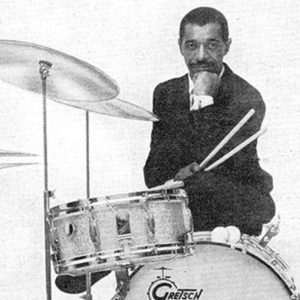
Friday Feb 28, 2025
Philly Joe Jones Centennial
Friday Feb 28, 2025
Friday Feb 28, 2025
WKCR presented a marathon broadcast celebrating the centennial of drummer Philly Joe Jones on July 15, 2023.
From my shift, here are segments including a survey of his collaborations with Tadd Dameron, 35 minutes or so sampling of Jones recordings with Elmo Hope, and an obligatory finish with “Blues For Dracula”. For Philly Joe was a child of the night, who made such beautiful music.

Thursday Feb 20, 2025
Bill Hardman
Thursday Feb 20, 2025
Thursday Feb 20, 2025
Bill Hardman was a crisp trumpeter with the brashness and elan of the bebop and hard bop ethos, colored also by a lyrical and even romantic aspect in his tone. While perhaps not achieving tremendous fame, he was a valued figure in our jazz scene of his time.
Bill Hardman was born in 1932 (or 33 depending on the source) and raised in Cleveland, where he came up with musicians such as Tadd Dameron.
After early professional experience, Hardman moved to New York and fit right in with Charles Mingus Jazz Workshop. He also was in a band with his Mingus-mate Jackie McLean. In late 1956, Hardman [and McLean] joined Art Blakey’s Jazz Messengers, and their edition of the Messengers, sometimes overshadowed in our lore, made numerous recordings through 1957 enshrining the developing hard bop sound.
Hardman plied his trade in the 1960's, with notable associations as a member of Lou Donaldson’s groups, and on various occasions he rejoined later incarnations of the Jazz Messengers.
In the late 1970's and 1980's Bill was a key figure in the hard bop New York scene, often in a regular working group teamed with tenor saxophonist Junior Cook.
In the late 1980's Hardman moved to France and was settling in with his family, but tragically he suffered a cerebral hemorrhage and died in December 1990.
originally broadcast February 16, 2025
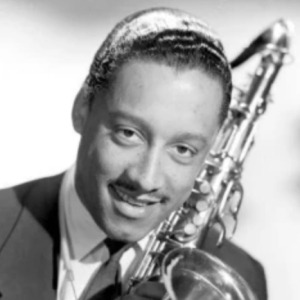
Monday Feb 17, 2025
Paul Quinichette
Monday Feb 17, 2025
Monday Feb 17, 2025
Tenor saxophonist Paul Quinichette was born in Denver in 1921 (some say earlier) and as a youth met his mentor Lester Young. Paul adopted Young’s style, and played the sax with the same creamy, free-flowing, lithe tone, although he also had his own very personal invention and attack.
While Paul was college trained, he also was a product of the vernacular western swing tradition. His first major work was with Jay McShann’s big band. Quinichette’s breakthrough came with the Count Basie orchestra, joining in 1951 at the inception of Basie’s “New Testament” band. There he filled the role of principal tenor sax soloist much as Pres, Lester Young, once did, and by then Quinichette fully garnered the loving moniker the “Vice-Pres”.
Just as Mercury/Clef was recording Basie’s new ensemble, they also signed up Quinichette to back Dinah Washington on her discs. With Basie’s urging and support, Quinichette was provided several record dates as a leader of small combos, which propelled him to a solo career. Throughout the 1950's, he performed in various settings and made many records as a leader. Quinichette also appeared on albums in blowing sessions with the likes of John Coltrane and Gene Ammons, and he accompanied Billie Holiday and Sarah Vaughan on some of their famous vocal recordings.
Beset by health problems, and also the victim of the decline of jazz’s popularity during the rock and roll invasion, Quinichette retired from music in the 1960's and worked as an electrical engineer and television technician. He came back in the 1970's as part of the classic jazz revival scene, performing with Brooks Kerr at Churchill’s, at the West End Café, and with Jay McShann once again, one of the “Last of the Blue Devils”. Quinichette died in 1983.
originally broadcast February 16, 2014; re-broadcast July 11. 2021
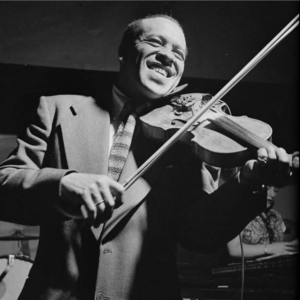
Monday Feb 03, 2025
Stuff Smith
Monday Feb 03, 2025
Monday Feb 03, 2025
Stuff Smith was an innovator of jazz violin and a leading figure of small group combos and jumpin’ entertainment in the 1930's.
Stuff Smith derived a deep, driving, sound on his fiddle, with unique voicings, heartfelt tones, and a fluid, driving sense of rhythm and swing that enraptured the soul.
He was a dynamic showman, a humorous vocalist with hit novelty songs such as “I’se A Muggin’”, “You’re A Viper”, and “Knock Knock Who’s There”. As his biographer Anthony Barnett has perceptively noted, Smith could fulfill the roles of comic jive at the same time as being a serious, investigative musician, like his hero Louis Armstrong, his pal Fats Waller, and his protégé Dizzy Gillespie.
Hezekiah Leroy Smith was born in Portsmouth, Ohio in 1909 to a middle class black family, his father a barber, mother a teacher, and both musically inclined. “Stuff” was a childhood nickname. His older sister played classical music, but Smith followed his father, who had a band that played for popular local dances. In his early teens he moved to study at Johnson C. Smith University in North Carolina, but with his footloose bent, discarded formal training and left school to go on the road as a professional musician.
Stuff’s first major experience was the Alphonso Trent orchestra, a traveling “Territory Band”, in the late 1920's. Settling in Buffalo, New York in 1930, Smith became a leading figure in the local African-American musical and business community, directing bands and nightclubs along with Jimmie Lunceford and Lil Hardin Armstrong.
Smith moved to New York City in 1936. Fronting a small combo including Jonah Jones he became an immediate sensation at the Onyx Club on fabled 52nd Street and made hit records.
Among other highlights, in the late 1950's Smith joined up with the impresario Norman Granz, who presented Stuff on records with Ella Fitzgerald, Dizzy Gillespie, Oscar Peterson, Stephane Grappelli and the like, and on concert tours with the Jazz At The Philharmonic. Later, Smith took up residence with Joe Bushkin in a storied and sophisticated engagement at the Embers.
He then went to Europe, moving to Copenhagen in 1965, with many other American jazz expatriates, and Stuff Smith developed a great following there. However, suffering from various health problems that had lingered, he died shortly after his 58th birthday, on September 25, 1967.
originally broadcast December 17, 2017

